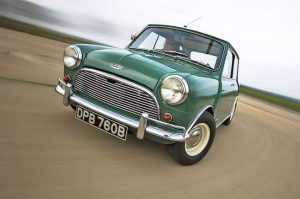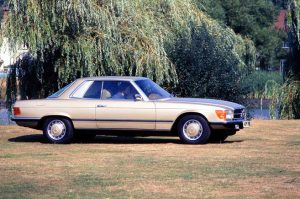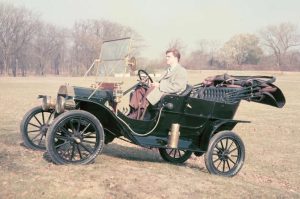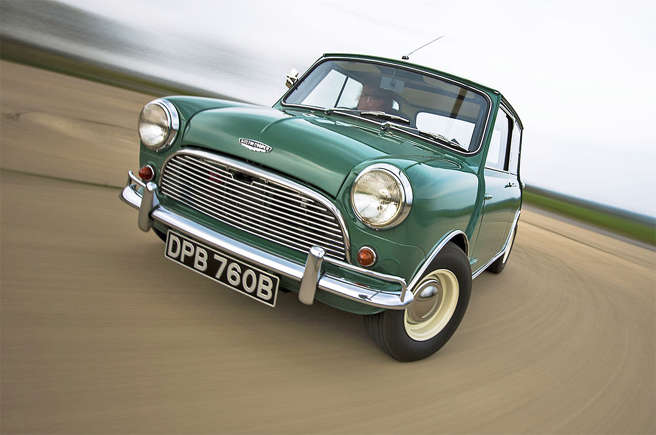While nameplates can sometimes seem eternal, it’s rare for a car to remain unchanged for more than a decade.
Manufacturers redesign platforms to incorporate the latest advances in weight-saving materials and safety, and they tweak sheet metal to lure buyers into showrooms with the promise of something fresh. But this story is about the models that bucked the trend, and went on for a very long time.
Volkswagen discontinued the reborn Beetle in 2019, which has reminded us all, lest we need it, that the original Beetle was an extremely long-lived car indeed. Here we take a look at all the longest-surviving cars, and where the original Beetle stacks up. We start at the ‘shortest’ and work our way upwards.
Peugeot 205 (1983-1998) – 15 YEARS

Peugeot began designing the 205 in 1978 as a replacement for the aging 104. The model had to be light, easy to build, and use numerous existing parts to keep development costs in check. Peugeot had somewhat reluctantly absorbed Citroën and Chrysler’s entire European division so it couldn’t afford to make a financial mistake.
The 205 made its debut in early 1983 as a four-door hatchback. It immediately became one of the brand’s best-sellers. The line-up quickly grew with the addition of a two-door hatchback, a convertible, a small van and, of course, the popular GTi (pictured). The Rallye and T16 variants helped reel enthusiasts into showrooms.
Starting in the mid-1990s, value became the 205’s biggest selling point. Special edition models kept it afloat until production ended on the last day of 1998.
Suzuki Jimny (1998-2018) – 20 YEARS
The pocket-sized, pretension free Jimny 4×4 has been delighting the world since 1970. The first generation lasted 11 years, and the second 17. The third generation only died in 2018, after 20 years.
Power ranged from 65bhp all the way up to a mighty 86bhp – but what it lost in power it more than made up with a switchable ultra-low range gearbox and featherlight weight of around 1000kg (2200lb). This made it practically unstoppable and utterly charming to boot. The latest model is a worthy follow up, and is somehow even shorter.
Fiat Panda (1980-2003) – 23 YEARS
The original Fiat Panda drew inspiration from the Citroën 2CV and the Renault 4. Fiat asked its development department to come up with a simple, robust car with nothing superfluous inside or under the hood, and it gave Italdesign the same set of instructions for the exterior. Everyone involved took that mission to heart. Early examples came with an air-cooled two-cylinder engine from the 126 and often-criticised leaf springs out back.
The Panda took on many identities during its long lifetime. Fiat offered it as a 4×4, a van with plastic body extensions and an electric car with two seats. A total of 4.5 million examples were built in Turin. Even 14 years after production stopped, the original Panda remains a common sight in Italy and in certain parts of France.
Peugeot 206 (1998-present) – 24 YEARS & COUNTING
Peugeot introduced the 206 in 1998 to finally replace the 205. The line-up was even bigger than before. The 206 came as a hatchback with two or four doors, a station wagon named SW, a convertible with a power-retractable hardtop and, in some markets, a four-door saloon.
Tallying up score cards from every factory that manufactured the 206 paints an illustrious production run of about 10 million units. The model’s most popular markets were Europe and Latin America.
The 206’s life cycle was full of unexpected turns. When Dacia’s success took Peugeot by surprise, executives tried surfing the low-cost wave by selling a stripped-down 206 named 206+ as a cheaper alternative to the then-new 207. In China, the 206 mutated into the Citroën C2 to provide the brand with an entry-level model. Today, the 206 is still being produced in Iran.
Range Rover (1970-1996) – 26 YEARS
Less utilitarian than the Series II, the Range Rover was a new kind of Land Rover aimed at buyers seeking a leisure vehicle that could go almost anywhere. It hit the market as the popularity of SUVs surged, which partly explains its unusually long production run.
The Range Rover progressively moved upmarket during the 1980s, and it became a common sight at posh ski stations in America after making its US debut at the 1987 Los Angeles Auto Show.
Mercedes-Benz SL (R107, 1971-1989) – 18 YEARS

Few roadsters exude timeless elegance like the R107-generation Mercedes-Benz SL. With an interior fit for a king, the SL occupied the top spot in the Mercedes line-up for nearly two decades. It remains the only SL ever to spawn a four-seat coupé with a fixed roof.
The body style (named SLC) retired in 1981 to make space for the W126-based SEC.
Peugeot 404 (1960-1991) – 31 YEARS
Autocar praised the Peugeot 404’s road manners when we tested the saloon in 1965. It turns out the Pininfarina-designed 404 excelled off the pavement, too. Its legendary robustness earned it a cult following across Africa.
European production stopped in 1975, but the last 404 built in Kenya wore a 1991 registration. Its successor, the 504, enjoyed a similarly long career.
Renault 4 (1961-1994) – 33 YEARS
The Renault 4 was the right car at the right time. Designed to replace the 4CV, it rendered its predecessor completely obsolete with a front-engine, front-wheel drive layout and a large boot accessed through a practical hatch. It was everything a people’s car should be: affordable, reliable and easy to mend.
Renault made countless little tweaks to the 4. Its bonnet wore four grille designs, and its engine bay housed a series of increasingly powerful four-cylinders. Its basic body never changed significantly, however. Renault built over 8 million examples of the 4 in a dizzying array of nations including France, Ireland, Morocco, Algeria, Yugoslavia, Chile and Uruguay.
Ford Model T (1908-1927) – 19 YEARS

The Ford Model T deserves credit as the first mass-produced car. It was much more basic than the expensive, luxurious models built in the same era, but it was cheap enough for almost anyone with a full-time job to afford one. Pricing started at US$500 in 1917, which represents about US$9600 (£7100) today. Used examples cost even less.
Crucially, the Model T forever changed the notion of free time by giving millions of Americans the opportunity to explore the world around them without riding a horse or taking a train. Production ended after Ford manufactured 15 million units in 12 countries.
Jeep Wagoneer/Grand Wagoneer (1963-1991) – 28 YEARS
The Jeep Wagoneer pioneered the luxury SUV segment. It was a monumentally important model for the brand because it shared no parts or styling cues with the CJ, which evolved from the Willys used during WWII. It offered enough space for an entire family, and enough ground clearance to let users make the most of its four-wheel drive system.
Like the Range Rover, the Wagoneer (later called Grand Wagoneer) gradually moved upmarket during its production run. Jeep notably worked on eliminating noise and vibrations inside the cabin to make it less truck-like. Production ended in 1991 when Jeep replaced the Grand Wagoneer with the first Grand Cherokee.
Volkswagen Jetta (mk2, 1984-2013) – 29 YEARS
Volkswagen began producing the second-generation Jetta in China in 1991, a year before it ended European production. While early models were built from complete knock-down (CKD) kits, the FAW-Volkswagen joint-venture began manufacturing the Jetta using locally-sourced parts in 1995.
The second-generation Jetta went through three different front-end designs, each inspired by the Volkswagen design language of its respective era. It’s still commonly used as a taxi in some parts of China, including Beijing. VW recently announced that Jetta will become a stand-alone brand in China.
